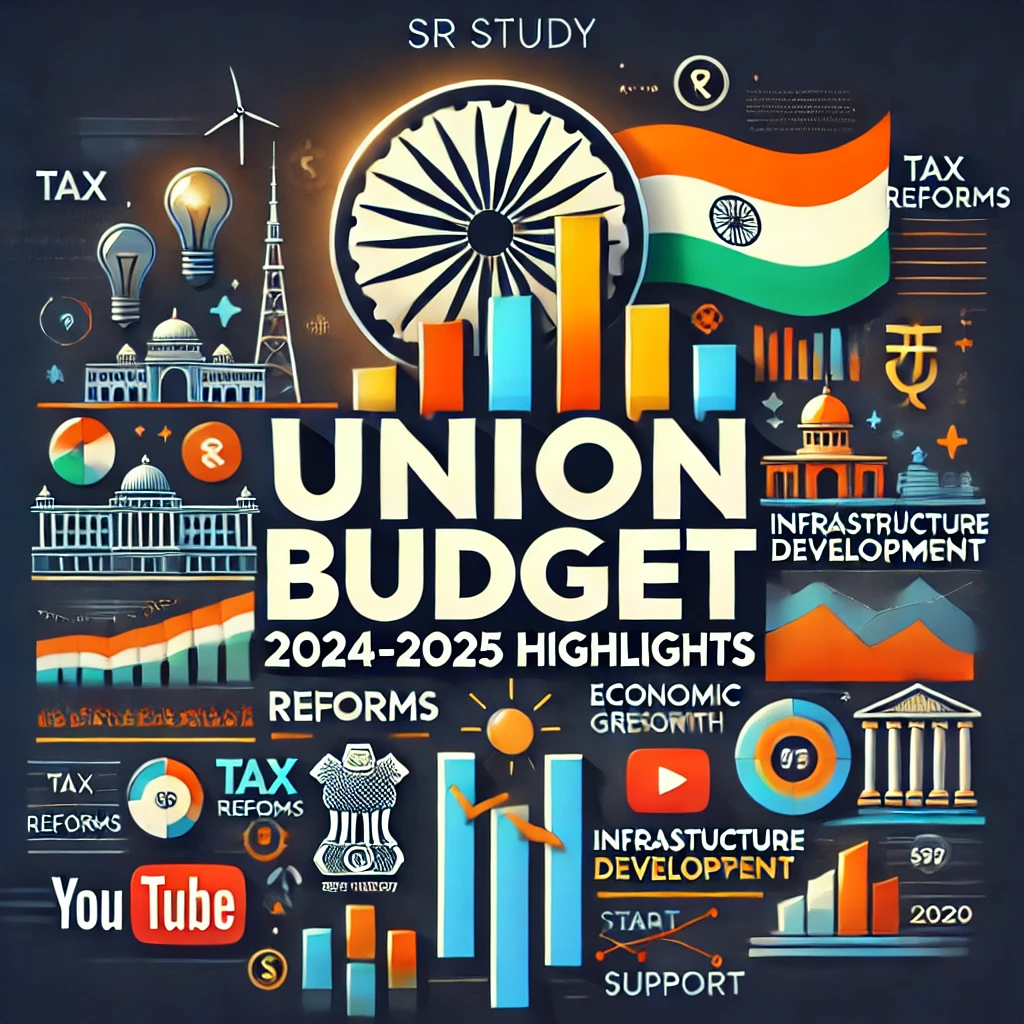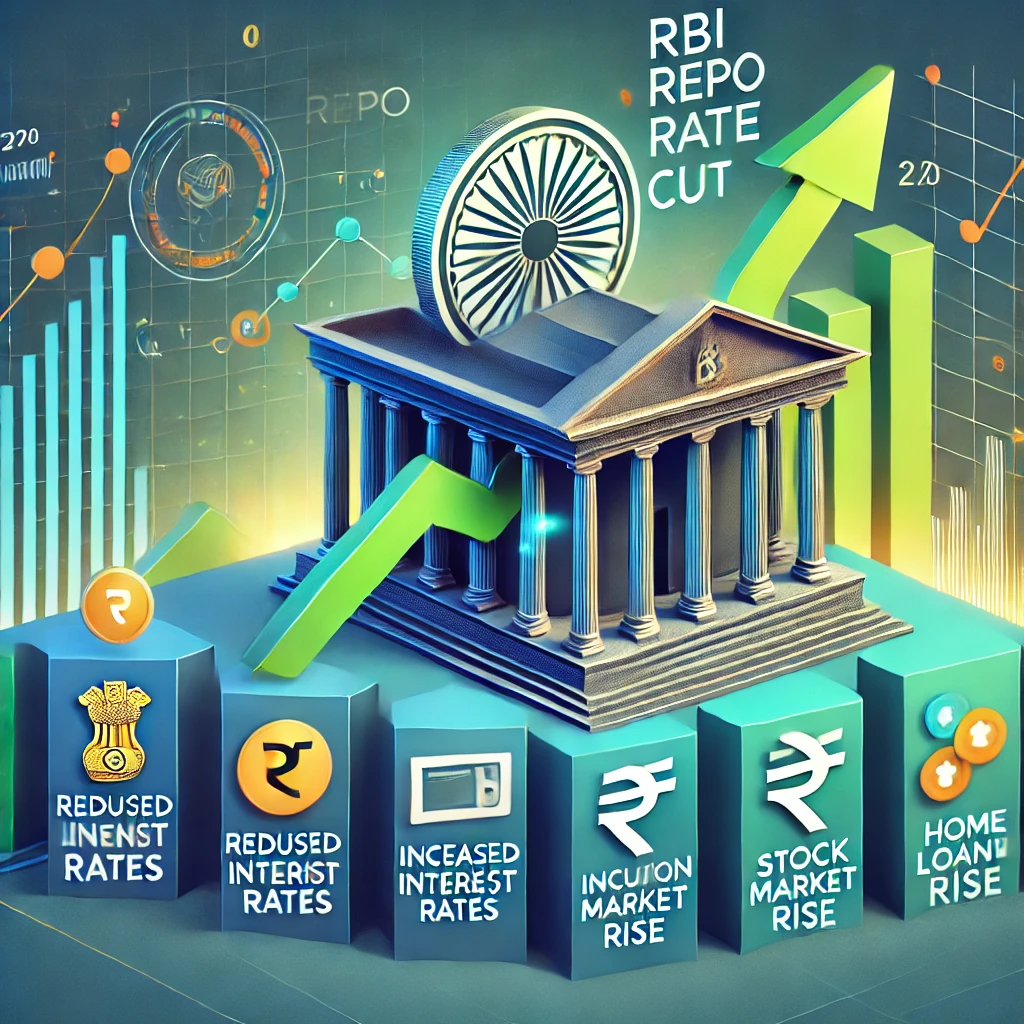The Union Budget 2024-2025, presented by Finance Minister Nirmala Sitharaman, outlines India’s economic priorities, tax reforms, and development plans for the upcoming financial year. This budget focuses on boosting infrastructure, economic growth, agriculture, and social welfare while ensuring fiscal discipline. In this blog, we will break down the most important aspects of the budget for SR Study readers.
1. Constitutional Aspects of the Budget
- Article 112: The Union Budget is also known as the Annual Financial Statement and is presented under Article 112 of the Indian Constitution.
- Article 265: No tax shall be levied or collected except by the authority of law, ensuring that taxation measures introduced in the budget adhere to constitutional provisions.
- Article 266: All government revenues, loans, and repayment of loans form part of the Consolidated Fund of India, and expenditures must be approved by Parliament.
- Article 280: The Finance Commission plays a crucial role in the distribution of financial resources between the Union and State governments.
- Article 110: The budget may include a Money Bill, which deals with taxation and financial matters, requiring approval from the Lok Sabha.
- Article 270, 275, 282: These articles govern financial relations between the Union and States, including grants and revenue-sharing.
2. Income Tax Reforms
- Higher Tax Exemption: The income tax exemption limit has been raised from ₹7 lakh to ₹12 lakh under the new tax regime, benefiting middle-class taxpayers.
- Simplified Tax Structure: A new income tax bill aims to make tax filing easier and reduce compliance burdens for individuals and businesses.
- No Changes in Old Tax Regime: Taxpayers opting for the old tax regime will continue under existing slabs.
3. Agriculture & Rural Development
- Subsidies Boost: ₹4.57 trillion has been allocated for food, fertilizer, and rural employment subsidies to uplift the rural economy.
- High-Yield Crop Initiative: The government has introduced a new program benefiting 17 million farmers to improve agricultural productivity.
- Irrigation and Infrastructure: Increased investment in rural infrastructure, including irrigation projects and road connectivity, to enhance farm output.
4. Infrastructure & Energy Development
- Massive Infrastructure Push: Investment in roadways, railways, and ports to improve logistics and transportation.
- 100 GW Nuclear Power Target: The government aims to achieve 100 GW of nuclear power by 2047 to strengthen India’s energy security.
- Renewable Energy Expansion: Increased funding for solar and wind power projects to reduce carbon footprint and promote sustainability.
5. Startups & Business Development
- Startup Incentives: Tax exemptions and easier compliance for startups to encourage entrepreneurship.
- Manufacturing Growth: Focus on ‘Make in India’ with incentives for domestic industries and MSMEs.
- Ease of Doing Business: Simplified GST compliance and digital infrastructure upgrades for businesses.
6. Education & Skill Development
- Higher Education Investment: Increased funding for IITs, IIMs, and other premier institutions.
- Skill Development Programs: New vocational training and digital learning initiatives to equip youth with industry-relevant skills.
- AI and Technology Push: Special focus on AI, robotics, and data science education in schools and colleges.
7. Healthcare & Social Welfare
- Healthcare Budget Boost: Increased funding for public health programs and medical infrastructure.
- Women Empowerment Schemes: Financial incentives and social security programs for women entrepreneurs.
- Affordable Housing Initiative: Expansion of the Pradhan Mantri Awas Yojana to ensure housing for all.
8. Fiscal Management & Economic Growth
- Fiscal Deficit Target: The fiscal deficit is projected to decline to 4.4% of GDP, ensuring financial stability.
- GDP Growth Outlook: The government is optimistic about achieving high economic growth, supported by investment in key sectors.
- Foreign Direct Investment (FDI): Policies to attract more foreign investments and improve economic competitiveness.
Conclusion
The Union Budget 2024-2025 is a balanced approach toward economic growth, social welfare, and financial stability. It focuses on tax relief for the middle class, infrastructural advancements, support for agriculture, and promoting entrepreneurship.
With strong constitutional backing, the budget ensures transparency, accountability, and efficient financial planning, reinforcing India’s commitment to economic resilience and sustainable development.
For students and professionals associated with SR Study, this budget brings new opportunities in education, employment, and business development.
Stay tuned to SR Study for more updates, insights, and expert analysis on how these policies will shape India’s future.
#UnionBudget2024 #EconomicGrowth #TaxReforms #StartupIndia #SRStudy



